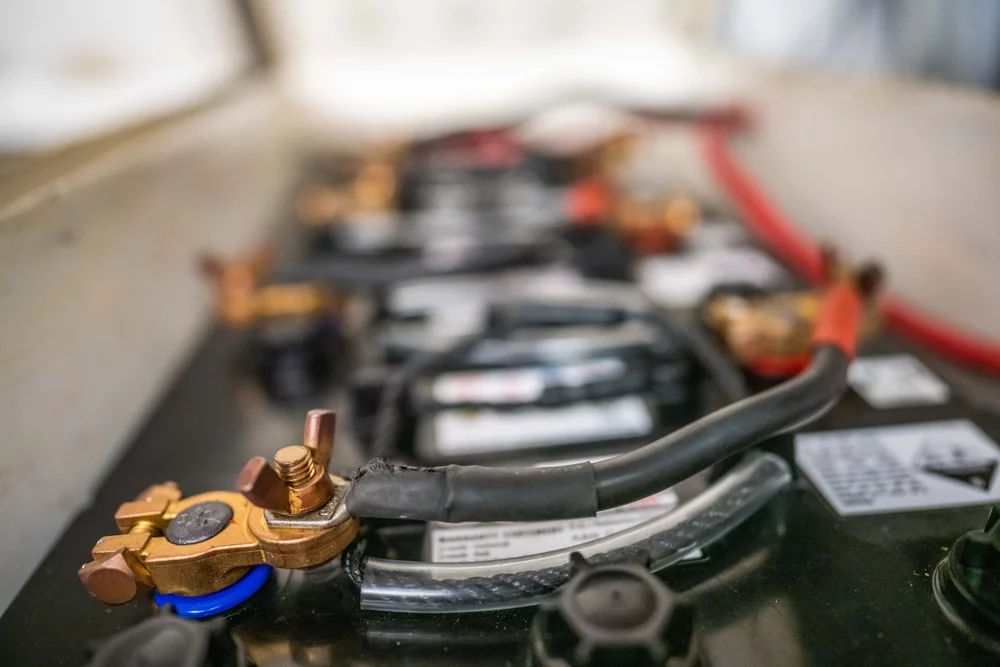Hello, owners of fine marine vessels! It’s a good idea to put an isolator or separator between your boat’s batteries if you have more than one. You can charge numerous batteries at once with each gadget without worrying about overcharging or unevenly draining any of them.
There are some key differences between battery isolators and battery separators, despite the fact that both are made to charge numerous batteries at once.
What’s A Battery Isolator VS. A Battery Separator ?
Isolators for batteries are straightforward gadgets that only permit current to travel in one way. To prevent the batteries from discharging at different rates, they often utilize diodes or relays to cut them off from each other. Each battery can be charged and used separately from the others in the system when a battery isolator is used. Battery isolators are less effective than battery separators due to the voltage drop across the diodes or relays.
Meanwhile, battery separators are high-tech gadgets with embedded microprocessors that keep track of the batteries and distribute the charging current as required. Instead of charging all the batteries equally, battery separators can determine which one needs it most and charge only that one. Hence, battery separators are superior to battery isolators in terms of efficiency and can charge batteries more quickly and precisely. Their main drawback is that they cost more than battery isolators.
There is also a distinction between battery isolators and battery separators in terms of which batteries they may safely accommodate. Battery isolators are more suited for use with standard lead-acid batteries, whereas battery separators work better with more modern battery technologies like AGM and lithium-ion batteries. Battery separators are more sophisticated and necessary for modern batteries due to their exact charging requirements, while battery isolators are sufficient for older batteries.
Isolators and separators for numerous batteries accomplish the same goal of ensuring the secure and rapid charging of many batteries. Their intricacy, efficiency, and ability to work with a wide variety of batteries are where they most diverge from one another. Whether you go with an isolator or a separator for your boat’s batteries depends on factors including the boat’s electrical setup, how many batteries you want to use, and your budget.
Tips on Installing an isolator or separator on a Boat
Just installing an isolator or separator between the boat’s batteries will help you get more use out of your batteries and keep your electrical system in tip-top shape. In order to accomplish this, please follow these steps:
Step 1: Get a good battery separator or isolator.
Battery isolators and battery separators are the two most common components of multi-battery systems. Nevertheless, a battery separator is a sophisticated device that constantly monitors the batteries and changes the charging current between them as needed, whereas a battery isolator normally comprises of diodes or relays that enable electricity to travel in just one direction. As a rule, battery separators cost more than battery isolators, but they allow for more accurate and efficient charging. Pick the gadget that works best with your boat’s power supply and meets your demands.
Step 2: Collect the Required Equipment and Materials
All you need to install a battery isolator or separator is a few simple things like:
Separator or isolator for batteries
Chargers for batteries (at least one positive and one negative)
Tool for crimping
Tools for removing insulation from wires
Tape for electrical connections Cable ties
a wrench or a socket set
step 3: Remove the batteries.
It’s important to remove the batteries before working on the electrical system, as doing so will prevent potential shocks and fires. The negative cable must be disconnected before the positive one is disconnected.
Step 4: Connect the battery isolator or separator.
A dry, secure spot, like a bulkhead or battery box, is ideal for installing the battery isolator or separator. Connect the device’s positive terminal to the positive cable coming from the alternator. Plug the battery’s positive terminals into the device’s positive output ports. Choose the right-sized cables for your electrical system, and make sure you connect them in the right order.
Step 5: Reconnect the battery connections.
Reconnect the batteries in the opposite sequence from how they were removed after installing the battery isolator or separator. The positive cable should go back in first, followed by the negative. Examine the battery terminals to guarantee they are free of corrosion and securely fastened.
Testing the System
Get the engine going and check the battery voltage. If the battery isolator or separator is doing its job, the voltage across all the cells will be consistent. Equalizing the voltage may require adjusting the device’s settings or double-checking the wiring.
Step 7: Tape Down the Wiring and Clean Up
To prevent the wires from rubbing against other parts, use cable ties and electrical tape to keep them in place. Get rid of the trash and tidy up the workspace.
To conclude, a battery isolator or separator installed on a vessel can assist in keeping the batteries healthy for a longer period of time and keep the electrical system running without a hitch. The advantages of a well-maintained electrical system are yours to enjoy with only a few minutes of effort and the help of a battery isolator or separator that you install yourself using these straightforward instructions.
P.S. : Are Battery Separators / Isolators good for AGM Batteries ?
Yes, battery isolators and separators are good for AGM (Absorbent Glass Mat) batteries. In fact, these devices are suitable for all types of batteries, including lead-acid, gel-cell, and AGM batteries. They help to prevent overcharging and uneven battery drainage, which can significantly extend the lifespan of your batteries. Moreover, using a battery isolator or separator can improve the efficiency of your charging system and reduce the risk of electrical problems on your boat. Therefore, whether you have AGM batteries or any other type, installing a battery isolator or separator can be a wise investment for the health of your electrical system.

